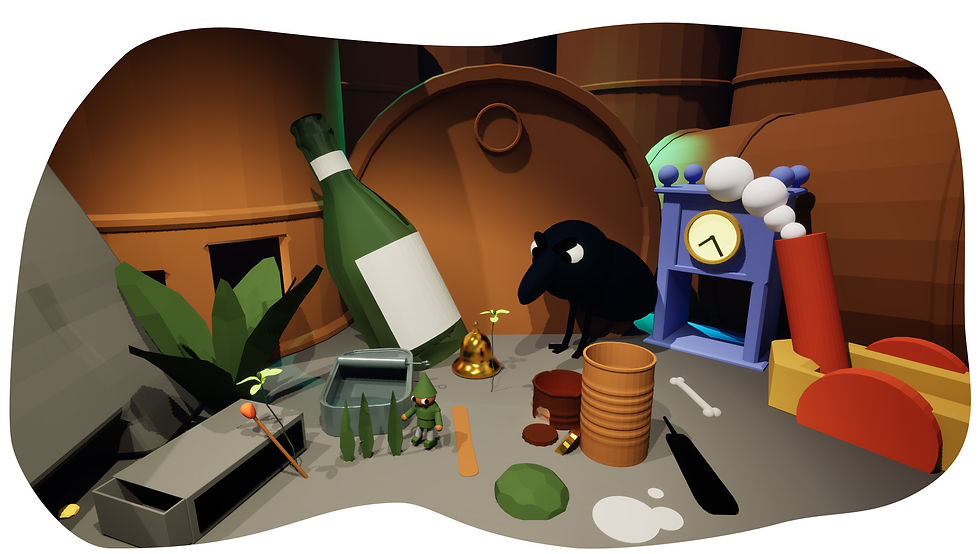
A first person dive into immersive worldbuilding
Making something out of nothing
My superpower is my curiosity. I get inspired by the most unassuming things. For this level, I started with the most unassuming of things: A little muddy ditch by the outskirts of a town.
I wondered: how would it be if you were a tiny critter in a ditch? How would you move? Who would you meet? Could I transform a trivial, dirty ditch into a vibrant world?


Mechanics for the imagination
I don't need much to get my imagination going.
But it's helpful to have some rudimentary mechanics working when blocking out. I created a patrolling raven with an AI Sight and a respawn point – just enough to frighten me a little. And I made a rock-throwing-mechanic and bell, without knowing exactly what I would be using it for, to be able to interact with the environment.
I believe great level designs are created when careful research and planning meet serendipitous discoveries. I try to be open to luck.
In the end, the mechanics helped conjure up a story to myself about the critters living in the ditch and the hardships they endure.

Designing discoverability
I set out to design a compelling, hub-like environment that supports both puzzle-solving and stealth gameplay. I enjoy the challenge of balancing findability—making sure players can locate key elements—and discoverability, where exploration is rewarded with unexpected insights or paths.
Mostly it's a matter of anchoring the overall landscape with strong midterm goals and sightlines while keeping the local enviroment intricate enough to allow for questions and the feeling of agency.

I can make you feel small

When playtesting my initial blockouts, I noticed that people didn't quite comprehend the setting or the scale of my world.
I decided to spend a day in blender producing some highly recognizable objects. I wanted people to instantly read the scenes.
Picture book




Playthrough